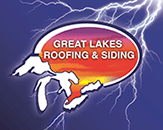Roofing systems are built with either rafters or trusses. Most residential roofing contractors will inform you which type of structure will work best for your roof replacement, but this comes after careful planning and consideration. Some systems even employ both types of structures depending on the design! To understand their differences, Great Lakes Roofing and Siding shares their insight:

What Are Rafters?
Rafters are what most contractors refer to as the “stick framing” of the roof. These are essentially planks that are 2 x 10s or 2 x 12s that slope down from the central ridge beam at the top part of the roofing system and intersect with the exterior walls. The long planks support the roof sheathing with their ceiling joists extended horizontally across the floor of the attic space. You’ll find the joists secured together between the exterior walls, creating a sturdy structure that holds your roofing system.
What Are Trusses?
Trusses are prefabricated wooden structures that utilize a triangular webbing of structural members. They’re made with chords, which are the long sloping beams that extend to the top of the truss and the beam that runs horizontally along the bottom. Trusses are designed to provide support for the roof by distributing their weight over a broad area. Along with the ties that compose the interior triangular webbing of trusses, they also support the exterior walls of your home.
What Are Their Differences?
Residential and commercial roofing contractors understand how rafters and trusses offer similar benefits, so they know which structure can best fit your needs and preferences. If you want to add room from your attic space but don’t have the budget at the moment, rafters are your best choice because they offer more storage space without affecting the roof’s structural integrity. Installing insulation is also much faster with rafters, which is a big benefit for those looking to add more energy efficiency to their homes.
Trusses are also great options for your roofing system. They offer more precise and quality control as they’re cut by computer-aided saws and other fabrication equipment in the factory. This ensures proper distribution of your roof’s weight more effectively compared to rafters. Roof construction is also faster when you use trusses because they’re already manufactured in the factory! By the time they’re delivered to the worksite, they’re already assembled.
When it comes to excellent residential and industrial roofing contractors, there’s only one company you can trust. Work with Great Lakes Roofing and Siding today by calling (877) 938-9318 or through our convenient contact form that you can fill out for an appointment.
